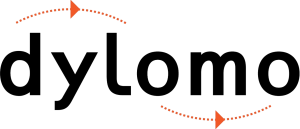This is an Eval Central archive copy, find the original at drbethsnow.com.
2.3 Clarifies the program theory.
I really like helping programs figure out what their theory of change is. Early in my career as an evaluator, I was surprised how often I would work with a program that had no idea what its theory was. Like, you’d sit down with them and ask questions about what they were trying to achieve and how what they thought what they were doing was going to help them achieve it – and they didn’t know. They had never really thought about it. The program was the way it was by some combination of it having been started by someone in some way at some time for some reason and then it had been adapted over the years in response to funding cuts/new funding opportunities/new leadership/new research/[enter all sort of other possible factors here]. While talking about this with my class this weekend (I’m teaching a Program Planning & Evaluation course in a Masters of Health Administration program), one student described the programs that she’s worked on as having been MacGyvered and I absolutely love that description!
Perhaps way back when a program started there had been an idea of a program theory – or possibly not – but it’s been MacGyvered over the years and often there us no record of any original program theory. And so I discovered that an important part of work as an evaluator is often to help the program make explicit the theory of why they think the program will result in changes to achieve whatever it is trying to achieve. Because even if a program doesn’t have an explicit program theory, there is some implicit theory underneath.
And there are many benefits about making your program ‘s theory of change explicit. As an evaluator, I want to know what the program’s theory is so I can design an evaluation to test the theory. But it can also be quite helpful to the program itself – helping them to get everyone on the same page about what the program is actually trying to achieve and getting them to think about whether what their program does is likely to get them there. Also, sometimes mapping out a program theory helps a program to identify that it is doing activities that are not likely to help them achieve their goals. It’s surprising how often programs do things because “we’ve always done these things”, even though they may no longer be needed or relevant. Working through a program theory can help identify those things.
Oftentimes, I work with those involved in the program to clarify the theory by developing a logic model together. There is a debate about whether a logic model is or is not a program’s theory of change. According to Michael Quinn Patton (2012), a logic model is simply a description of a logical sequence, but “specifying the causal mechanisms transforms a logic model into a theory of change”, i.e., you need to “explicitly add the change mechanism” to make it a theory of change. I like this explanation because it reminds us that a logic model on its own isn’t quite enough to be a “theory of change” so we need to think about what is the actual mechanism that is believed to lead to the change.
Thinking about how I do the work of clarifying program theory, I think my tips would be:
- however you choose to clarify a program’s theory of change, do it collaboratively with as many people who have an interest in the program as possible. This is important because:
- different people bring different perspectives and thus can help us to more fully understand how the program operates and the effects it can have
- a lot of the value of clarifying a program theory comes from the process. Finding out that people aren’t on the same page as one another about what the program is doing and why, identifying gaps in your program’s logic, surfacing assumptions that people involved in the program have – all of this can lead to rich conversations and shared understanding of the program among those involved and you just don’t get that by handing someone a description of a program theory that was created by just one or two people.
- a program theory should be thought of as a living thing. You can’t just map out a program theory once and think “well, that’s done!” Programs change, contexts change, people change… and our theories of change need to change to keep up with all of that!
This topic is also a good time to plug the free online logic modelling software that my sister, her partner, and I created: Dylomo (short for DYnamic LOgic MOdels). You can sign up for free and play around with it. Apologies in advance for any bugs – we created it off the side of our desks, so haven’t had time to add all the features we would like. If you do have any issues with it – or feedback about it – do get in touch!

References
Patton, M. Q., (2012). Essentials of Utilization-Focused Evaluation. Thousand Oaks, CA: Sage.
Image Source
-
Photo of leaves was opsted on Flickr by Mehul Antani with a Creative Commons licence. Again, I couldn’t find a good free-to-use image for what I was searching for (program theory, theory of change, logic model), but while searching for “change” I found that image of leaves changing colour and thought it was beautiful.
-
Dylomo logo was designed by my amazing sister, Nancy Snow.
